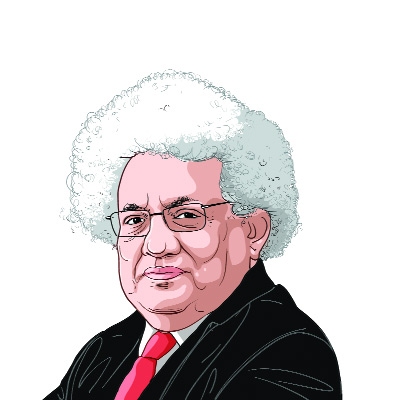Opinion Magic Numbers
The secret of life,as the fans of the Hitchhikers Guide to the Galaxy know,is 42.
The secret of life,as the fans of the Hitchhikers Guide to the Galaxy know,is 42. The UPA also has a magic number which is vital to its success. This is the GDP growth rate. In the midst of the multiple,and indeed daily,mounting troubles the government has,there was a ray of sunshine. The advance estimate for the real GDP growth rate for 2010-11 turned out to be higher than anticipated at 8.6 per cent. In the midst of all sorts of allegations about scams and secret tapes,no longer secret,and current and ex-bureaucrats giving away public property like there was no tomorrow,the government can still sit back and say 8.6 per cent.
Obviously,the economy achieves high growth rates almost automatically,regardless of the policy moves the government may make or miss out on. That is the one long lasting fruit of the 1991 revolution that Narasimha Rao and Manmohan Singh launched. The Indian private sector has thrived and goes on doing so year on year. It generates the immense mountains of tax revenue which finance the programmes that the Left wing of the Congress dreams up even as they hate liberalisation. This is the truce; growth generates revenues which can be spent on NREGA and other schemes of intervention devised by the NAC,the keeper of the Congresss left wing conscience
Yet,I cannot help the feeling that the good times may not continue. Much is made,for example,of the 5.6 per cent growth rate in agriculture. But this is from a low base last year when the sector grew hardly at all. Over two years,if you average out the agricultural growth rate,we are in normal low growth numbers. When inflation numbers hit large digits,there are excuses made about the index numbers causing problems due to revision. But when statistics can give a misleading upward boost,no adjustment is made.
The real villain is the inflation rate. For the first time,as far as I can remember,a double digit inflation rate seems to have embedded itself in the economy. The previous time we had such high inflation rates ,it led to the Navnirman Morcha in Ahmedabad which began the countdown towards Emergency. You have been warned.
There used to something called the Misery Index,which was unemployment rate plus inflation rate. I propose the real GDP growth rate minus the inflation rate. You will find that during most of the last twenty years,this difference was positive,ie growth rate higher than inflation rate. Now it is a large negative number. I expect the outcome in 2011-12 will also be negative,higher inflation than real growth.
We are being softened up in advance of the Budget. The deficit may not be above 5 per cent as projected but only 4.6 per cent,we are told. But surely an economy growing at 8.6 per cent,should not have any deficit at all. Budgets during the first ten years of the Planning in the 1950s consistently showed revenue surplus. But the fiscal irresponsibility of several years since has led to a huge mountain of debt. Interest payments were estimated in the last budget at Rs 2,48,664 crores (36 per cent of total revenue receipts) which is just under ten times the expenditure on health,education etc which was Rs 29,483 crores.
It is quite shocking that year after year,a choice is made to go on financing loss making public sector companies (eg Air India) or subsidising water,electricity etc and the burden of these subsidies falls in terms of high interest payments. If poverty persists,it is not because the country lacks resources to tackle it,but because it wastes the resources on sustaining past bad decisions. Some people are arguing that only if all the black money stashed abroad would be brought back,India could solve its problems. But the money is there. The need is to shake off the complacency and ask of each item of expenditure that does this benefit the rich,the middle classes or the poor?
Petrol subsidies only help the better off,for example. Perhaps not the next Budget,but can we have such calculations in the future?





